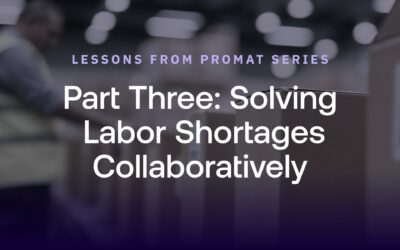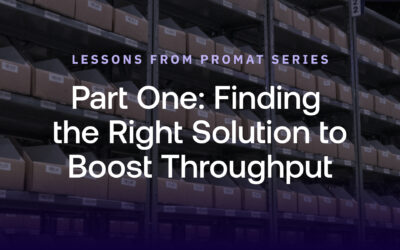Turning Operational Insights Into Better Decisions

october 30, 2025 | By brendon Bielat
We often assume that more visibility automatically means better control, but in fulfillment that belief can backfire. On a busy picking floor, dozens of blinking lights, constant dashboard alerts, and overlapping task notifications can pull associates in every direction, leaving them scrambling to prioritize and slowing overall throughput. Too much visibility creates noise, decision fatigue, and reaction instead of anticipation. The challenge isn’t seeing everything; it’s knowing what truly deserves your attention.
Why Information Overload Slows Fulfillment Operations
Fulfillment runs on data—too much of it in most cases. Every system, sensor, and workflow generates signals that get buried in noise or arrive too late to matter. Maybe it’s a dashboard with hundreds of rows of data that no one has time to interpret. Or a miscalibrated sensor that numbs workers to constant warnings. Or a supplier’s new scanner that adds a friendly chirp to every read, adding to the chaos. The result is the same: information overload that slows operators down instead of speeding them up.
How High-Performing Warehouses Use Data to Improve Throughput
High-performing operations use information differently. One site I visited was able to improve their throughput by removing hundreds of metrics and focusing on just a few that truly mattered. Limiting visibility made the picture clearer, not smaller. The best operators filter out distractions and focus on what truly drives flow. When a replenishment lane slows or a picking zone starts to back up, they spot it in real time and act before the slowdown becomes a problem. They use data to keep people moving efficiently, not to overwhelm them with dashboards.
Shifting From Reactive Dashboards to Predictive Decision-Making
Fulfillment teams that turn insight into action shift their culture from reactive to predictive. They share a few defining habits, designing for silence with engineering systems that alert only when action is truly needed:
- They focus on now. Real-time visibility into orders, exceptions, and utilization keeps teams proactive rather than reactive.
- They anticipate before it breaks. Predictive analytics highlight where congestion or delays will emerge before performance drops.
- They empower every level. Frontline managers and associates can adjust priorities, rebalance tasks, and reroute work without waiting for top-down direction.
At Onward Robotics, we learned early that the problem isn’t a lack of data but a lack of clarity. That realization changed how our teams think about data-to-action loops. Instead of adding more dashboards, we focused on designing signals that drive decisions. We focus on making that transition easier. Our orchestration platform connects people, robots, and systems so fulfillment teams can make faster, clearer decisions and maintain consistent performance even when conditions shift.
Treat data like seasoning: add enough to improve the outcome, but never so much that it spoils it. The fulfillment leaders who understand that will find that clarity, not volume, is what keeps operations flowing.
Explore OuR “Finding Fulfillment Flow” Series
This article is the first in our three-part series on optimizing warehouse operations for consistent performance. Discover more insights from Onward Robotics Chief Product Officer Brendon Beliat:
- Keeping Throughput Consistent When Demand Fluctuates – Discover strategies to maintain steady performance during demand spikes
- Scaling Operations Without Adding Complexity – Learn how to grow your fulfillment network without introducing operational chaos
Ready to turn insights into action? See how Onward Robotics helps fulfillment teams make better decisions. Talk to an automation expert.


